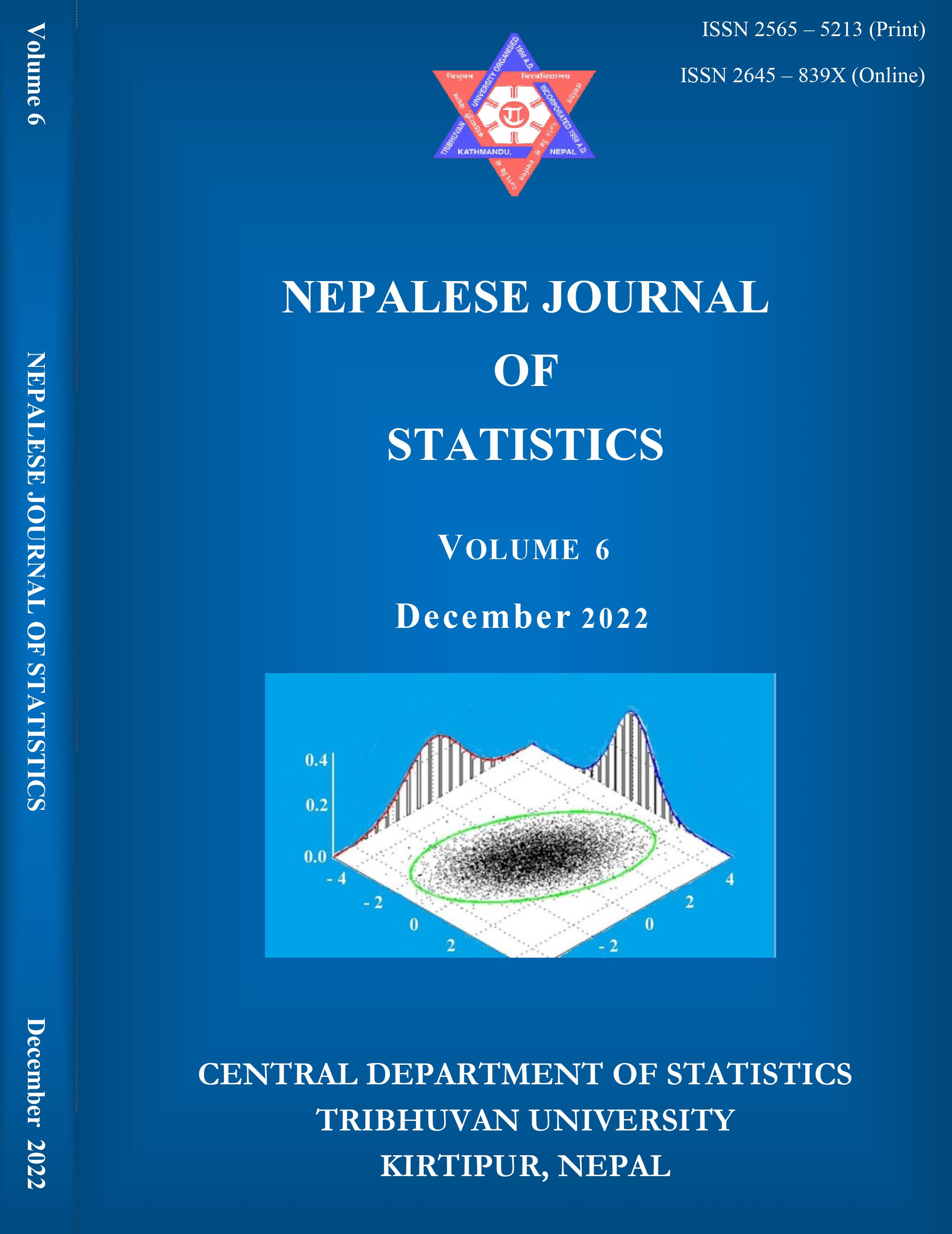Inverse Exponentiated Odd Lomax Exponential Distribution: Properties and Applications
DOI:
https://doi.org/10.3126/njs.v6i01.50801Keywords:
Estimation, hazard function, maximum likelihood estimation, odd Lomax exponential distribution, survival function, T-X family of distributionAbstract
Background: New family of distributions has important functions in generalization of distributions by modifying some existing distributions for getting more flexible irrespective to applied and practical view point. The Inverse Exponentiated Odd Lomax Exponential Distribution (IEOLE) having four parameters is suggested. Proposed model is based on T-X family of distribution which is the extended form of beta-generated distribution. Based on the LSE, MLE, and CVM methods, the parameters of the proposed distribution are estimated. Different model validation criteria and model comparisons are done by considering other existing models.
Materials and methods: IEOLE is compound distribution derived by using theoretical concept of Odd Lomax Exponential distribution and T-X family of distribution. The parameters of the proposed distribution are estimated through the least square, Cramer–Von Mises and maximum likelihood methods. The applicability of the proposed model is evaluated using R programming on two real-life time data sets.
Results: The statistical properties and different characteristics like the hazard rate function, the cumulative distribution function, quantile function, skewness, and kurtosis of the proposed model are discussed. Box plots, TTT plot, density fits etc. shows that the proposed model fits better to considered two real data sets. Different model validation criteria such as AIC, BIC, and CAIC are obtained and compared with some existing well-known probability distributions.
Conclusion: This study presents new probability model called Inverse Exponentiated Odd Lomax Exponential distribution. The density curves of the model show that it is unimodal having right skewed. The suggested model has proven to be versatile for modeling real-world data due to its increasing-decreasing, right-skewed form. Also, the hazard rate function (HRF) graph is decreasing, decreasing-increasing or inverted bathtub shaped according to the value of the model constants. Different validation criteria show that the suggested model fits data well and the goodness-of-fit shows that proposed model has lesser test statistic value and higher p- value with respect to some existing models.
Downloads
Downloads
Published
How to Cite
Issue
Section
License
© Central Department of Statistics, Tribhuvan University, Kirtipur, Kathmandu, Nepal
The author of article must sign the copyright permission or the author must assign copyright to the Central Department of Statistics, Tribhuvan University prior to publication.
All rights reserved.




